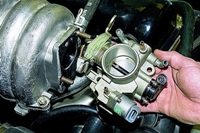We install the car on a lift or a viewing ditch
The suspension must be well washed before inspection
Inspecting the rubber-metal hinges of the lower front suspension arms
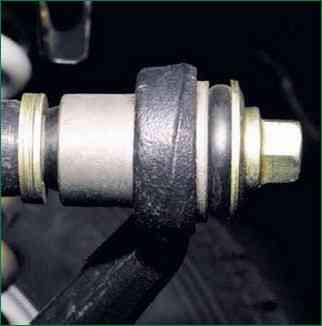
Hinges must be replaced if found:
- - gaps and one-sided swelling of rubber;
- - rubber wear on the ends of the hinge;
- - offset of the outer hinge bush relative to the inner one more than 2.5 mm;
- - if the width of the rubber band between the ends of the outer sleeve and the thrust washer of the hinge does not fit within 3.0-7.5 mm.
In the same way, we evaluate the condition of the upper levers
We examine the shock absorbers and springs of the front and rear suspensions.
The springs must not be damaged. Tears, cracks and severe deformation of rubber bushings, cushions and shock absorber compression buffers are unacceptable.
It is not allowed to leak liquid from shock absorbers. Slight "sweating" of the shock absorber in its upper part while maintaining the characteristics is not a malfunction.
Alternately hanging the front wheels (while the car must be securely fixed on the support rack), we check the condition of the front wheel bearings
The wheel should rotate by hand evenly, without jamming or knocking.
Holding the wheel in a vertical plane, alternately sharply pull the upper part of the wheel towards us, and the lower part away from us, and vice versa.
We are convinced that there is no backlash (knocking). If there is a knock, ask the assistant to press the brake pedal.
If at the same time the knock disappears, then the hub bearing is faulty, and if the knock remains, then the ball joint is most likely worn out.
In case of excessive play, adjust the clearance in the bearings. We check the condition of the protective covers of the upper and lower ball bearings of the front suspension.
Replace ball joints with torn or cracked boots.

You can first assess the condition of the upper ball joint by strongly shaking the upper part of the wheel, in a plane perpendicular to the longitudinal axis of the car (in this case, it is necessary that the assistant press the brake pedal all the way).
The presence of play (knocking) in the suspension is a reason for a more detailed check of the upper ball joint.
To do this, hang out and remove the wheel
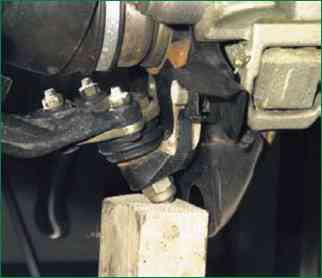
We substitute a wooden block under the lower ball joint and lower the car onto it until the spring is fully compressed
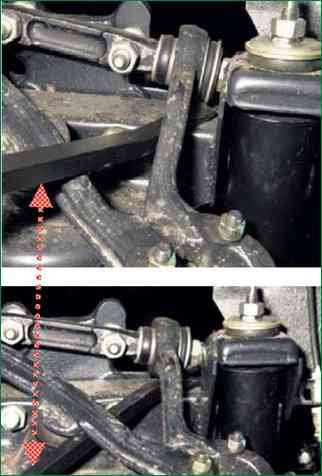
With a long mounting blade, alternately swing the upper arm of the front suspension down and up, creating a load, respectively, on pressing in and pulling out the ball joint pin from the support housing.
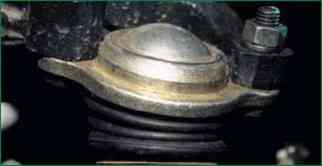
At the same time, we monitor the movement of the ball joint housing relative to the steering knuckle
If there is a backlash, then we replace the ball joint
To check the condition of the lower ball joint, remove the front wheel
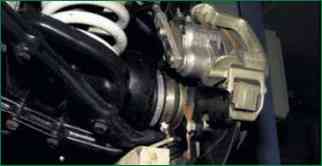
Substituting the support under the lower arm (as close as possible to the ball joint), we lower the car onto it until the spring is fully compressed
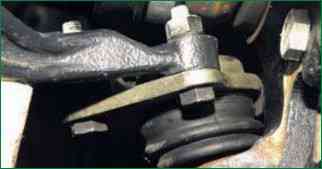
With a long mounting spatula, alternately swing the upper arm of the front down and up
And we observe the movement of the support body relative to the steering knuckle
If play is detected, then we change the lower ball joint.










